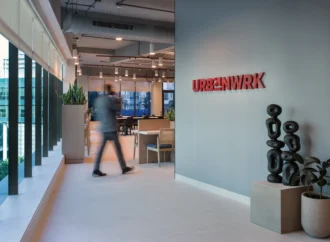Remote work is reshaping India’s real estate landscape, with flexible workspaces gaining prominence. Discover how this trend is driving investment strategies and altering property preferences.
The COVID-19 pandemic has accelerated a global shift towards remote work, fundamentally altering how and where people work. In India, this shift has sparked a revolution in real estate, with flexible workspaces emerging as a key focus for investors. As businesses increasingly embrace hybrid work models, the demand for flexible workspaces—offices that can adapt to varying needs and scales—has surged. This article delves into how remote work influences real estate investment in India, particularly within the flexible workspace sector, and offers expert insights into navigating this evolving landscape.
The Evolution of Flex Spaces | A New Era for Real Estate
Once a niche offering, flexible workspaces have rapidly gained traction in India’s major cities and emerging hubs. These spaces, designed to provide businesses with adaptable office environments, cater to a growing demand for agility in workplace arrangements. The rise of remote work has further fueled this demand as companies seek to balance office presence with the flexibility to work from anywhere. This paradigm shift reshapes investment strategies, making flexible workspaces a lucrative and forward-looking opportunity for real estate investors.
Key Drivers of Investment in Flexible Workspaces
1. Increased Corporate Demand for Flexibility
As companies navigate the complexities of hybrid work models, the need for flexible office solutions has never been greater. Flexible workspaces allow businesses to scale up or down quickly, catering to fluctuating team sizes and varying project requirements. This flexibility has increased demand for coworking spaces, managed offices, and serviced offices. This trend presents a unique opportunity for real estate investors to invest in properties that accommodate various business needs, ensuring a steady stream of tenants and sustained rental income.
2. Shift Towards Decentralized Office Locations
The traditional concept of centralised business districts is evolving. With remote work reducing employees’ need to commute daily, businesses are exploring decentralised office locations that offer greater convenience and cost-efficiency. Flexible workspaces in suburban areas, secondary cities, and even tier-2 and tier-3 towns are witnessing increased interest. This shift opens up new markets for investors and drives property appreciation in previously overlooked areas, providing significant long-term returns.
3. Rising Demand for Short-Term Leases
In the era of uncertainty, long-term leases have become less attractive to businesses. With their short-term leasing options, flexible workspaces have become preferred for companies seeking agility. Real estate investors recognise the benefits of this model, as short-term leases allow for quicker tenant turnover, higher rent premiums, and the ability to adapt pricing strategies based on market conditions. This dynamic approach to leasing is becoming a cornerstone of real estate investment strategies in the flexible workspace sector.
Strategic Considerations for Investors in Flexible Workspaces
1. Location and Accessibility
While flexible workspaces are increasingly spreading to decentralised areas, location remains critical. Investors should focus on properties with strong transportation links, proximity to residential neighbourhoods, and access to essential services. A well-connected location attracts businesses and ensures high occupancy rates, making the investment more resilient to market fluctuations.
2. Technological Infrastructure
The backbone of any successful flexible workspace is its technological infrastructure. High-speed internet, secure IT systems, and advanced communication tools are non-negotiables for modern businesses. Investors must prioritise properties equipped with robust technology or be prepared to invest in upgrading existing infrastructure. In addition, offering tech-enabled amenities such as virtual offices, cloud services, and smart office solutions can further enhance the appeal of flexible workspaces.
3. Customization and Scalability
Flexible workspaces thrive on their ability to offer customisable environments. Investors should consider properties that can be easily adapted to meet the specific needs of different businesses, whether through modular furniture, flexible floor plans, or innovative design solutions. Scalability is also crucial—investors should seek properties that can accommodate growth, allowing businesses to expand within the same location rather than relocating, thereby fostering long-term tenant relationships.
4. Sustainability and Well-being
The emphasis on sustainability and employee well-being is growing, and flexible workspaces are at the forefront of this trend. Green buildings, energy-efficient systems, and spaces designed to promote health and well-being are increasingly sought after by businesses. Investors who prioritise sustainability in their properties contribute to environmental goals and tap into a market of conscious tenants willing to pay a premium for such spaces.
Market Trends and Future Outlook
1. Hybrid Work as the New Normal
The hybrid work model, combining remote work with in-office presence, is here to stay. This ongoing shift drives the demand for flexible workspaces that accommodate varying occupancy levels and usage patterns. Investors should stay informed about businesses’ evolving needs as they adapt to this new normal, positioning themselves to capitalise on the growing demand for flexible workspace solutions.
2. Expansion Beyond Major Cities
While cities like Mumbai, Delhi, and Bangalore continue to dominate the flexible workspace market, smaller cities have significant growth potential. The expansion of infrastructure and the rise of remote work have made tier-2 and tier-3 cities attractive investment destinations. Investors who identify and tap into these emerging markets early stand to benefit from lower entry costs and higher returns as demand increases.
3. Innovation and Differentiation
The flexible workspace sector is becoming increasingly competitive, and innovation is key to standing out. Investors should consider properties that offer unique features or cater to niche markets, such as co-working spaces designed specifically for tech startups, creative industries, or wellness-focused businesses. Differentiation attracts specific tenant groups and builds a strong brand presence in the market.
Conclusion
The remote work revolution is not just a temporary shift but a transformative force reshaping India’s real estate landscape. With their adaptability, scalability, and modern amenities, flexible workspaces are at the heart of this transformation. For real estate investors, the rise of remote work presents a wealth of opportunities to invest in properties that cater to the evolving needs of businesses. By focusing on location, technology, customisation, and sustainability, investors can position themselves to thrive in the dynamic and rapidly growing flexible workspace market. As the demand for flexible office solutions rises, those strategically investing in this sector will likely reap substantial rewards.























